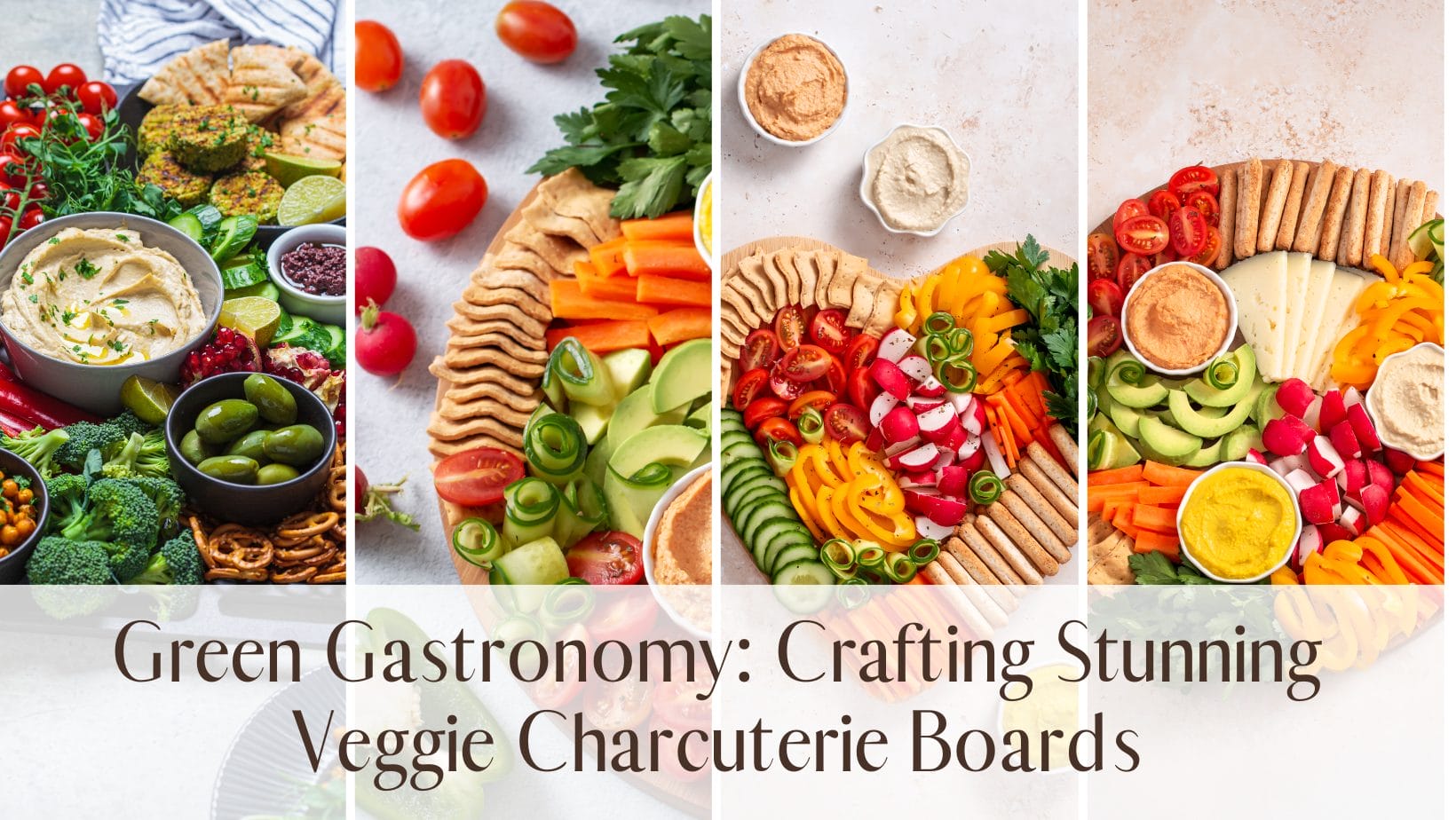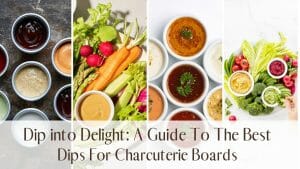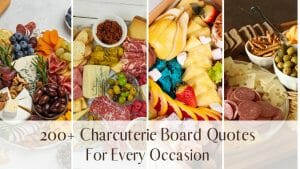Charcuterie boards have long been synonymous with indulgent assortments of meats, cheeses, and accouterments, but there's a delightful revolution taking place in the world of charcuterie: the rise of veggie charcuterie boards. As more people embrace plant-based diets and seek healthier alternatives, veggie charcuterie boards offer a creative and flavorful solution that satisfies both the palate and the eye.
In this comprehensive guide, we'll delve into the art of crafting stunning veggie charcuterie boards that are as delicious as they are Instagram-worthy. From understanding the essentials of veggie charcuterie to exploring creative assembly ideas and flavorful dip recipes, we'll equip you with everything you need to create memorable and mouthwatering veggie-centric spreads for any occasion.
Whether you're a seasoned pro looking to expand your culinary repertoire or a novice eager to impress with your snacking prowess, join us on a journey to discover the endless possibilities of veggie charcuterie. Get ready to elevate your snacking game and delight your taste buds with these vibrant and irresistible creations. Let's dive in!
TIP: Become a charcuterie artist with the help of 514K enthusiasts and professionals. Click here for quick, easy lessons and community support >>
Table of Contents [CLICK HERE TO OPEN]
Understanding Veggie Charcuterie
Veggie charcuterie has emerged as a vibrant and innovative alternative to traditional meat-centric charcuterie boards. In this section, we'll delve into what veggie charcuterie entails, its significance in modern dining, and the benefits it offers over its meat-based counterpart. Additionally, we'll address common misconceptions surrounding vegetarian charcuterie and provide insights on how to overcome them.
Defining Veggie Charcuterie
Veggie charcuterie involves the artful arrangement of various fresh and cooked vegetables, fruits, nuts, seeds, dips, and spreads on a board or platter. Just like traditional charcuterie, the focus is on creating a visually appealing and delicious spread, but with an emphasis on plant-based ingredients.
Significance in Modern Dining
The rise of veggie charcuterie reflects a growing shift towards plant-based eating habits and a desire for healthier, more sustainable food options. By showcasing the versatility and abundance of vegetables, these boards cater to a diverse range of dietary preferences and accommodate the needs of vegetarian, vegan, and flexitarian diners.
Benefits of Veggie Alternatives
- Health Benefits: Veggie charcuterie offers a wealth of vitamins, minerals, and antioxidants, promoting overall well-being and reducing the risk of chronic diseases.
- Sustainability: By reducing reliance on animal products, veggie charcuterie supports environmental sustainability by conserving resources and reducing greenhouse gas emissions.
- Inclusivity: Veggie charcuterie celebrates diversity and inclusivity by accommodating individuals with dietary restrictions or preferences, fostering a more welcoming dining experience for all.
Addressing Common Misconceptions
- Lack of Flavor or Variety: Contrary to popular belief, veggie charcuterie offers a wide array of flavors, textures, and colors, ranging from crisp and crunchy to creamy and indulgent. Experimenting with different ingredients and flavor combinations can elevate the experience.
- Perceived Complexity: While assembling a veggie charcuterie board may seem daunting at first, it can be as simple or elaborate as desired. With proper planning and creativity, anyone can create a stunning and delicious spread tailored to their tastes and preferences.
In summary, veggie charcuterie represents a culinary evolution that celebrates the abundance and versatility of plant-based ingredients. By understanding its definition, significance, and benefits, as well as addressing common misconceptions, individuals can embrace this delicious and nutritious alternative with confidence and creativity.
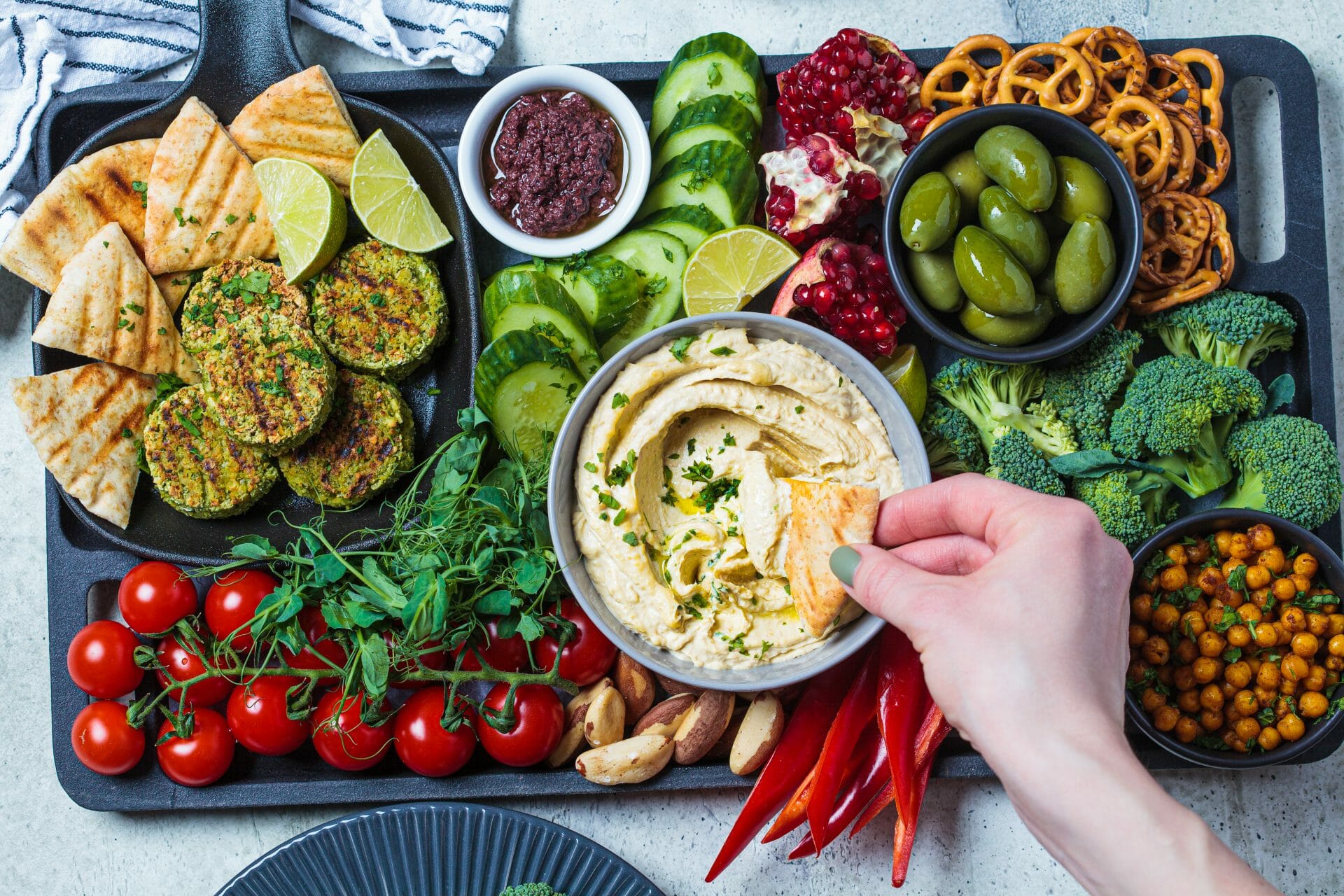
Essential Components For Your Veggie Charcuterie Board
The success of a veggie charcuterie board lies in the thoughtful selection and arrangement of its components. In this section, we'll explore the key elements that comprise a tantalizing veggie charcuterie spread, highlighting the importance of variety, colors, textures, and flavors in creating a visually appealing and palate-pleasing experience.
Various Vegetables (Fresh and Roasted)
At the heart of any veggie charcuterie board are an assortment of fresh and roasted vegetables. Opt for a diverse selection to cater to different tastes and preferences. Some popular choices include crisp cucumber slices, vibrant bell pepper strips, tender baby carrots, earthy mushrooms, and sweet cherry tomatoes. Roasted vegetables, such as cauliflower florets, zucchini rounds, and sweet potato wedges, add depth of flavor and a satisfyingly savory dimension to the board.
Fruits
Incorporating fruits into a veggie charcuterie board adds a refreshing contrast and a touch of sweetness. Choose a mix of seasonal fruits, such as sliced apples, juicy grapes, ripe strawberries, tangy citrus segments, and succulent melon cubes. The vibrant colors and natural sweetness of fruits complement the savory and earthy flavors of the vegetables, creating a harmonious balance on the board.
Nuts and Seeds
Nuts and seeds provide crunch, protein, and healthy fats to the veggie charcuterie board, enhancing its texture and nutritional profile. Include a variety of options such as almonds, walnuts, cashews, pumpkin seeds, and sunflower seeds. Consider toasting or seasoning them for added flavor and appeal. Sprinkling nuts and seeds throughout the board adds visual interest and a satisfying crunch to each bite.
Dips and Spreads
Dips and spreads are essential for adding creaminess and flavor to the veggie charcuterie board. Offer a selection of homemade or store-bought options, including classic choices like hummus, tzatziki, guacamole, and baba ganoush. Experiment with different flavor profiles by incorporating herbs, spices, citrus zest, or roasted vegetables into the dips. Arrange them in small bowls or ramekins strategically placed around the board for easy dipping.
Crackers and Bread
Crackers and bread serve as the perfect vehicles for enjoying the vibrant flavors and textures of the vegetables, fruits, nuts, and dips on the board. Choose a variety of options to cater to different dietary preferences, including whole grain crackers, crusty baguette slices, gluten-free crackers, and seeded flatbreads. Arrange them alongside the other components, ensuring easy access for guests to assemble their perfect bites.
Emphasizing Variety, Colors, Textures, and Flavors
The key to assembling a visually appealing and enticing veggie charcuterie board lies in the careful consideration of variety, colors, textures, and flavors. Aim for a diverse selection of ingredients to create visual contrast and interest. Incorporate a mix of vibrant colors, contrasting textures, and complementary flavors to stimulate the senses and tantalize the taste buds. By embracing variety and creativity, you'll transform a simple assortment of ingredients into a stunning masterpiece that delights both the eyes and the palate.
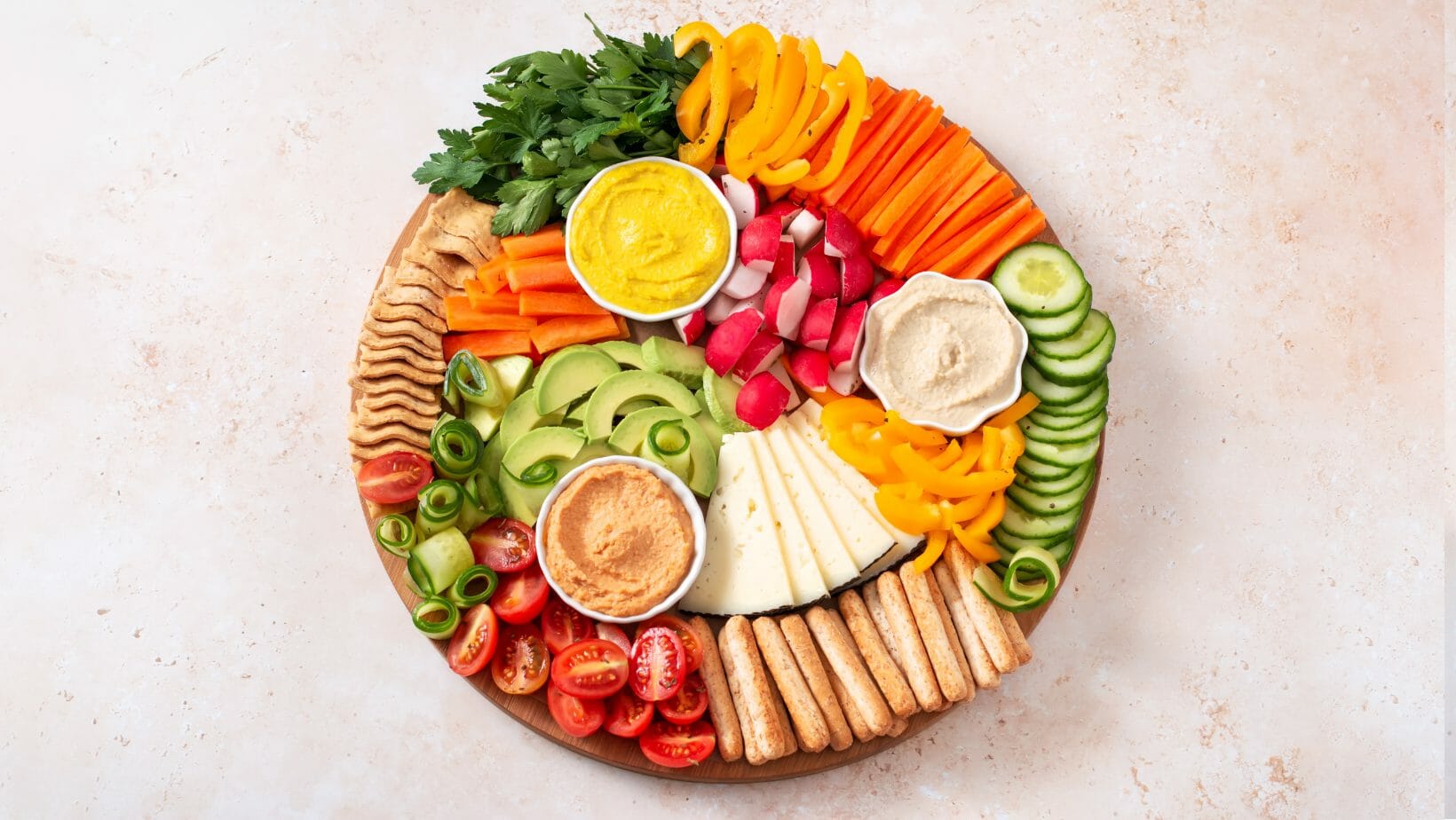
Creative Assembly Ideas
Assembling a veggie charcuterie board is an art form that allows for endless creativity and personal expression. In this section, we'll explore step-by-step instructions for creating a visually stunning and appetizing veggie charcuterie board, from selecting the right board to incorporating decorative elements. Additionally, we'll provide suggestions for themed boards, seasonal variations, and special occasions to inspire your culinary adventures.
Choosing the Right Board or Platter
Begin by selecting a suitable board or platter that complements the size and style of your veggie charcuterie spread. Options range from rustic wooden boards to sleek ceramic platters, each offering its own aesthetic appeal. Consider the number of guests and the amount of ingredients you'll be using to ensure ample space for arrangement. For larger gatherings, consider using multiple smaller boards or platters to accommodate different dietary preferences and create a dynamic display.
Arranging the Components
Start by strategically placing larger items, such as bowls of dips and spreads, on the board to serve as focal points. Then, arrange the vegetables, fruits, nuts, and seeds in groups or clusters, alternating colors, shapes, and textures for visual interest. Experiment with different patterns and arrangements, such as concentric circles, diagonal lines, or cascading layers, to create a dynamic and visually appealing composition. Leave some empty space on the board to prevent overcrowding and allow guests to easily access the components.
Incorporating Decorative Elements
Elevate your veggie charcuterie board with decorative elements that add flair and elegance to the presentation. Fresh herbs, such as rosemary sprigs, basil leaves, or dill fronds, can be scattered throughout the board to add a pop of color and aroma. Edible flowers, such as nasturtiums, pansies, or lavender blossoms, lend a whimsical touch and make for eye-catching garnishes. Consider adding additional garnishes such as lemon slices, olives, or pickled vegetables to enhance the visual appeal and complement the flavors of the board.
Themed Boards, Seasonal Variations, and Special Occasions
Get creative with themed veggie charcuterie boards tailored to specific occasions or culinary inspirations. For example, you could create a Mediterranean-inspired board featuring sun-dried tomatoes, marinated olives, feta cheese, and tzatziki dip. Embrace seasonal produce by incorporating fruits and vegetables that are in season, such as berries in the summer or root vegetables in the fall. For special occasions, consider adding festive touches such as holiday-themed decorations or custom-made garnishes to elevate the board and make it truly memorable.
By following these step-by-step instructions and unleashing your creativity, you'll be able to create stunning veggie charcuterie boards that not only delight the senses but also serve as a beautiful centerpiece for any gathering or celebration. Let your imagination run wild and have fun experimenting with different ingredients, arrangements, and themes to craft your perfect masterpiece.

Flavorful Dip Recipes
No veggie charcuterie board is complete without a selection of flavorful dips to accompany the vibrant array of vegetables. In this section, we'll explore a variety of easy-to-make dip recipes that perfectly complement the flavors of the veggies. From classic hummus variations to creamy yogurt-based dips, these recipes will elevate your veggie charcuterie experience to new heights.
1. Classic Hummus:
- Ingredients:
- 1 can (15 oz) chickpeas, drained and rinsed
- 2 cloves garlic, minced
- 1/4 cup tahini
- 2 tablespoons lemon juice
- 2 tablespoons olive oil
- 1/2 teaspoon ground cumin
- Salt and pepper to taste
- Instructions:
- In a food processor, combine chickpeas, garlic, tahini, lemon juice, olive oil, and cumin.
- Blend until smooth and creamy, adding water as needed to achieve desired consistency.
- Season with salt and pepper to taste.
- Transfer to a serving bowl and drizzle with additional olive oil, if desired. Garnish with a sprinkle of paprika.
2. Roasted Red Pepper Hummus:
- Ingredients:
- 1 batch of classic hummus (see recipe above)
- 1 roasted red pepper, peeled and chopped
- Instructions:
- Prepare a batch of classic hummus according to the recipe above.
- Add the roasted red pepper to the food processor and blend until well combined.
- Adjust seasoning if necessary and transfer to a serving bowl. Garnish with chopped fresh parsley.
3. Creamy Avocado Dip:
- Ingredients:
- 2 ripe avocados, peeled and pitted
- 1/4 cup Greek yogurt
- 2 tablespoons lime juice
- 1 clove garlic, minced
- Salt and pepper to taste
- Instructions:
- In a bowl, mash the avocados with a fork until smooth.
- Stir in Greek yogurt, lime juice, and minced garlic until well combined.
- Season with salt and pepper to taste.
- Transfer to a serving bowl and garnish with a drizzle of olive oil and a sprinkle of chopped cilantro.
4. Creamy Beetroot Dip:
- Ingredients:
- 1 cup cooked beets, peeled and diced
- 1/2 cup Greek yogurt
- 1 tablespoon lemon juice
- 1 tablespoon olive oil
- 1 clove garlic, minced
- Salt and pepper to taste
- Instructions:
- In a food processor, combine cooked beets, Greek yogurt, lemon juice, olive oil, and minced garlic.
- Blend until smooth and creamy.
- Season with salt and pepper to taste.
- Transfer to a serving bowl and garnish with a sprinkle of chopped chives.
5. Creamy Tahini Dip:
- Ingredients:
- 1/2 cup tahini
- 2 tablespoons lemon juice
- 1 clove garlic, minced
- 2 tablespoons water
- Salt and pepper to taste
- Instructions:
- In a bowl, whisk together tahini, lemon juice, minced garlic, and water until smooth.
- Season with salt and pepper to taste.
- Adjust consistency by adding more water if desired.
- Transfer to a serving bowl and garnish with a drizzle of olive oil and a sprinkle of sesame seeds.
These flavorful dip recipes are sure to impress your guests and enhance the enjoyment of your veggie charcuterie board. Experiment with different ingredients and flavors to create your own signature dips!

Presentation Tips and Tricks
Presentation is key when it comes to showcasing your veggie charcuterie board, whether it's for social media or a special gathering. In this section, we'll explore valuable tips and tricks to help you capture stunning photos and elevate the visual appeal of your veggie charcuterie creations. From mastering lighting and angles to incorporating props and editing techniques, we'll guide you through the process of creating captivating images that will impress your audience and enhance your dining experience.
Photographing Veggie Charcuterie Boards:
- Lighting: Natural light is your best friend when photographing veggie charcuterie boards. Position your board near a window or in a well-lit area to ensure bright, even lighting that highlights the colors and textures of the ingredients.
- Angles: Experiment with different angles to find the most flattering perspective for your board. Try shooting from above to capture the entire spread, or get down to eye level for a more intimate and immersive view.
- Composition: Arrange the components of your board thoughtfully, considering balance, symmetry, and visual interest. Play with shapes, textures, and colors to create a dynamic composition that draws the viewer in.
Enhancing Visual Appeal:
- Props: Incorporate props such as serving utensils, linen napkins, fresh herbs, or decorative plates to add depth and dimension to your photos. Choose props that complement the theme and style of your board without overpowering the main focus.
- Editing Techniques: Use photo editing software or apps to fine-tune your images and enhance their visual appeal. Adjust brightness, contrast, saturation, and sharpness to achieve the desired look while maintaining a natural and authentic feel.
- Consistency: Establish a cohesive aesthetic for your veggie charcuterie boards by maintaining consistency in styling, color palette, and editing style. This will help create a visually appealing and recognizable brand identity across your social media platforms.
Creativity and Experimentation:
- Themed Boards: Get creative with themed boards inspired by holidays, seasons, or cultural traditions. Incorporate seasonal produce, themed decorations, and festive touches to tailor your board to the occasion and tell a story with your presentation.
- Personalization: Experiment with different presentation styles and arrangements to showcase your personality and culinary creativity. Whether it's a rustic farmhouse vibe or a sleek and modern aesthetic, infuse your boards with your unique flair to make them stand out.
By following these presentation tips and tricks, you'll be able to capture stunning photos of your veggie charcuterie boards and create memorable dining experiences that delight the senses and inspire others to get creative in the kitchen.
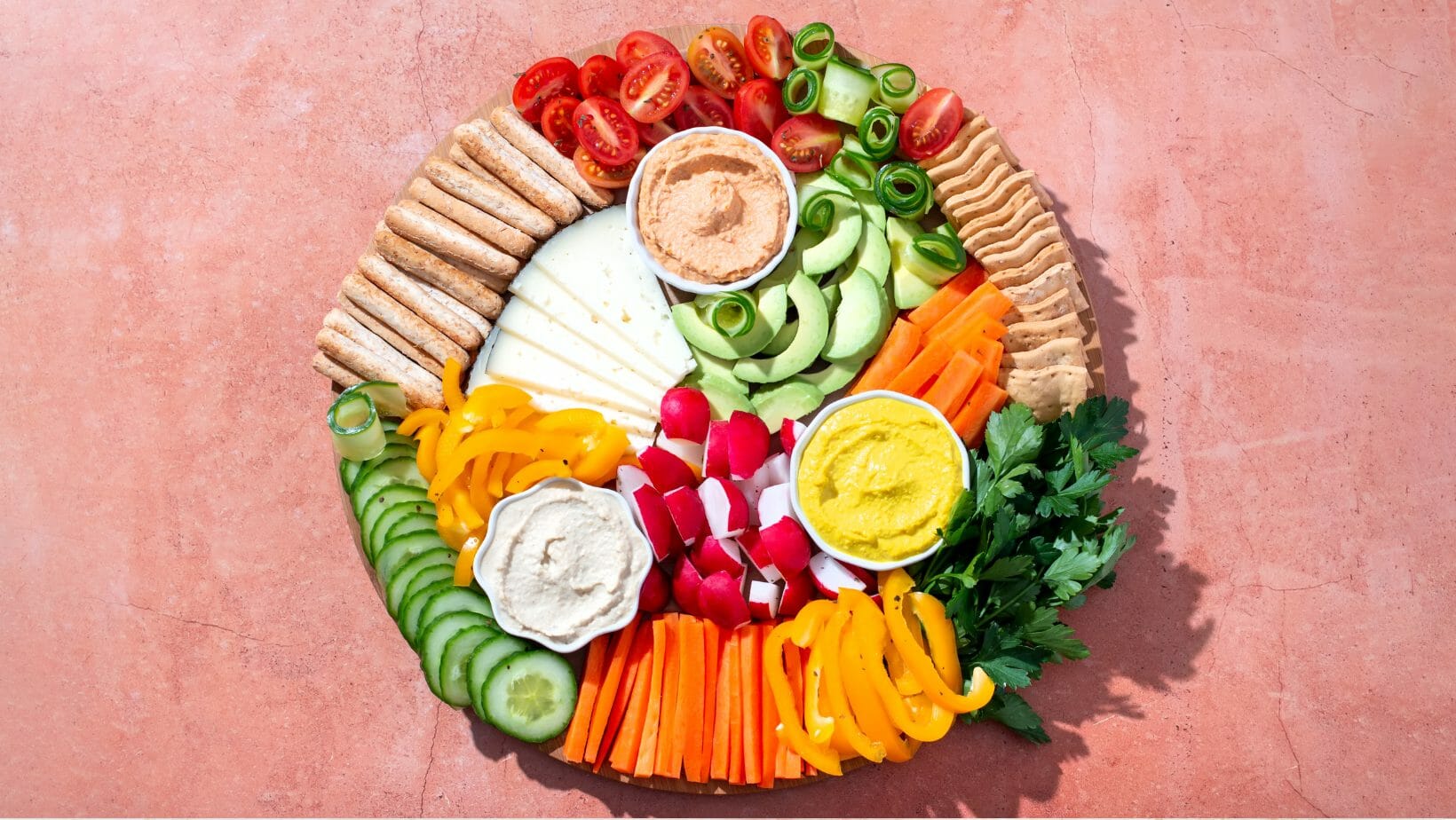
Serving and Enjoyment
Serving and enjoying a veggie charcuterie board is not only about the flavors and presentation but also about creating memorable experiences shared with friends and family. In this section, we'll explore tips for serving and enjoying veggie charcuterie boards to ensure that every gathering is a delightful and communal affair. From beverage pairings to portion sizes and the importance of social connection, we'll guide you through making the most of your veggie charcuterie experience.
Pairing Suggestions:
- Beverages: Consider pairing your veggie charcuterie board with a selection of beverages to complement and enhance the flavors. Wine, both red and white, offers a versatile option that pairs well with a variety of ingredients. Alternatively, opt for sparkling water or herbal tea for a refreshing and hydrating accompaniment that won't overpower the delicate flavors of the veggies.
Portion Sizes and Etiquette:
- Portion Sizes: When serving veggie charcuterie boards, aim for a balance between abundance and practicality. Provide enough variety to satisfy guests' appetites without overwhelming them with excess. As a general rule, plan for about 2-3 ounces of vegetables per person, adjusting based on the size of your gathering and other menu offerings.
- Etiquette for Sharing: Encourage guests to enjoy the veggie charcuterie board at their own pace, taking small bites and savoring each flavor combination. Remind them to use serving utensils or clean hands when taking portions to maintain hygiene and respect for others' preferences.
Emphasizing Communal and Social Aspect:
- Social Connection: Highlight the communal and social aspect of enjoying veggie charcuterie boards with friends and family. Encourage guests to gather around the board, engage in conversation, and share their favorite flavor combinations and experiences. Create a relaxed and inviting atmosphere where everyone feels welcome to indulge and connect over delicious food.
- Customization: Allow guests to customize their veggie charcuterie experience by offering a variety of dips, spreads, and accompaniments. Provide guidance on flavor pairings and encourage experimentation to discover new and exciting combinations that suit individual tastes and preferences.
By incorporating these serving and enjoyment tips into your veggie charcuterie gatherings, you'll create memorable experiences that celebrate good food, good company, and the joy of shared moments. Whether it's a casual get-together or a special occasion, the communal nature of veggie charcuterie boards is sure to bring people together and create lasting memories.
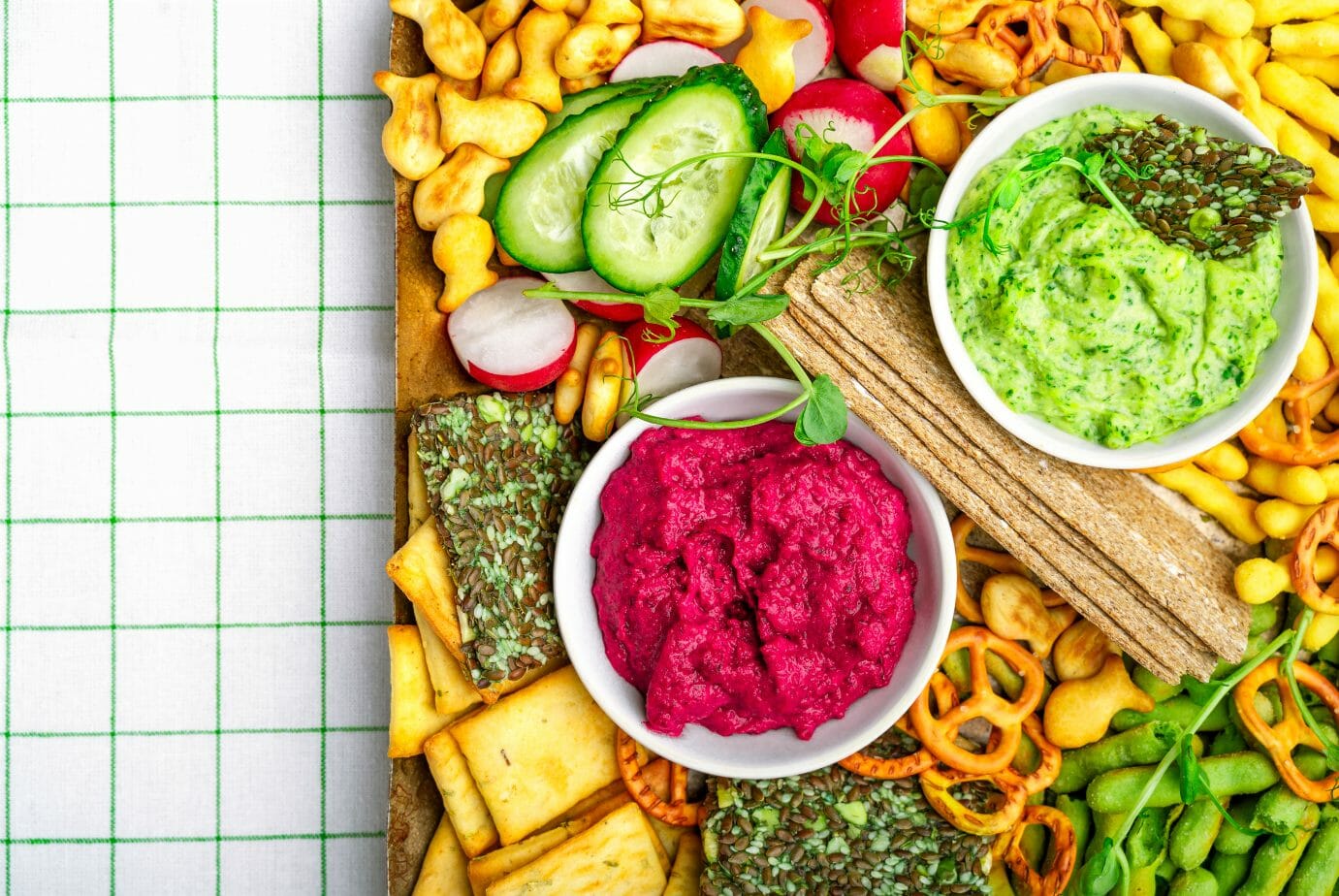
Wrapping It Up
In this comprehensive guide, we've explored the art of crafting delicious and visually stunning veggie charcuterie boards that cater to a variety of tastes and preferences.
We encourage readers to unleash their creativity and try their hand at creating their own veggie charcuterie boards. Whether you're a seasoned entertainer or a novice in the kitchen, veggie charcuterie offers endless opportunities for experimentation and personalization. Share your creations online and inspire others with your unique combinations and presentations. Join the vibrant community of veggie charcuterie enthusiasts and celebrate the joy of good food and shared experiences.
Veggie charcuterie isn't just about healthy eating—it's about indulging in delicious flavors, embracing creativity, and fostering connections with others. Whether you're hosting a gathering with friends and family, celebrating a special occasion, or simply treating yourself to a tasty snack, veggie charcuterie offers a delicious, healthy, and visually stunning option that's sure to impress. With its versatility, inclusivity, and aesthetic appeal, veggie charcuterie is the perfect addition to any table, any time.
In conclusion, let your imagination run wild and explore the endless possibilities of veggie charcuterie. Whether you're crafting a simple snack for yourself or creating an elaborate spread for a party, veggie charcuterie promises to delight your senses and elevate your dining experience. Embrace the beauty of plant-based ingredients, savor the flavors, and share the joy with those around you. Here's to many more memorable moments and mouthwatering veggie charcuterie creations in your future. Cheers!
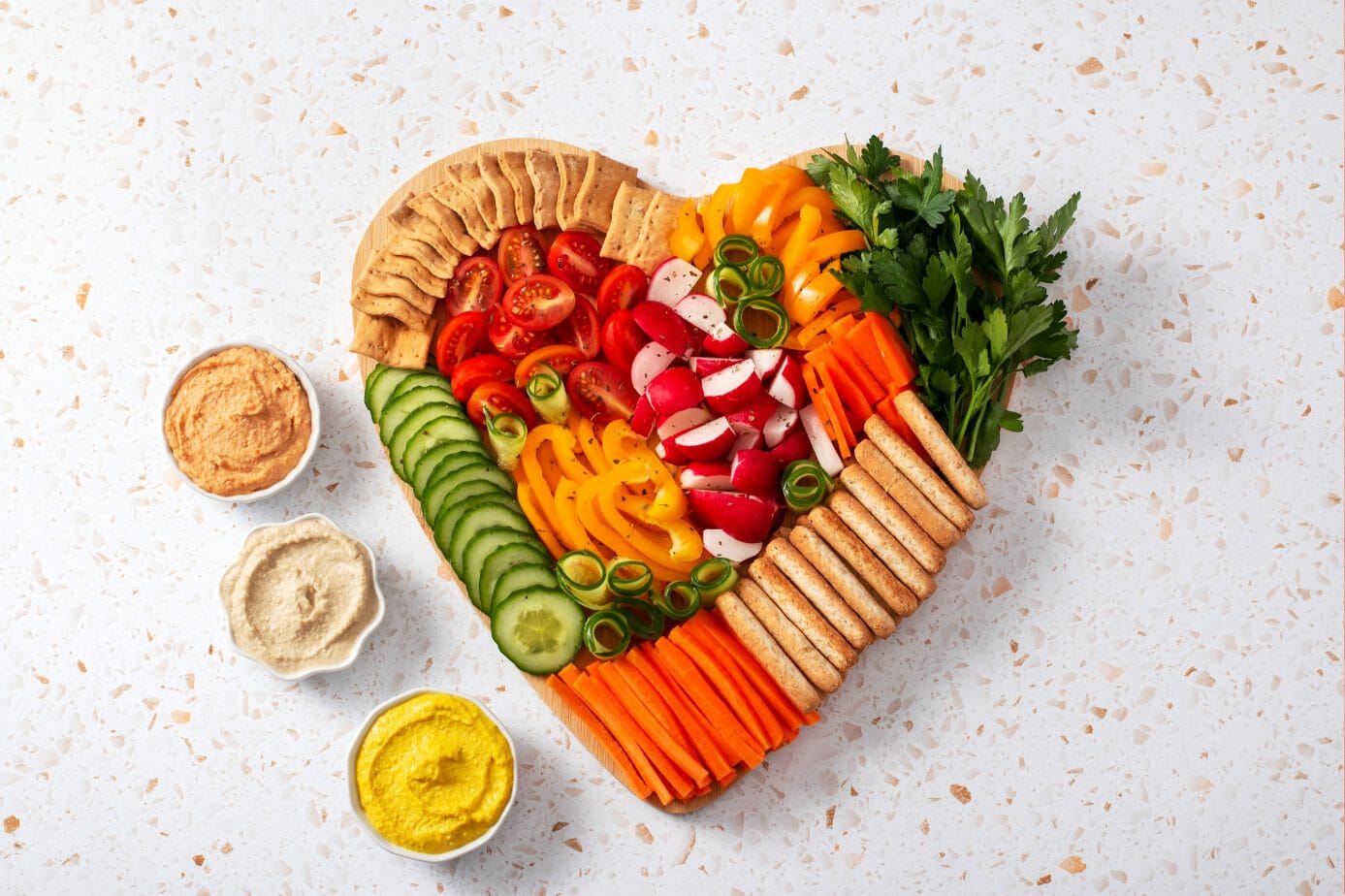
Frequently Asked Questions
What do you put on a veggie charcuterie board?
On a veggie charcuterie board, you typically include various fresh and roasted vegetables, fruits, nuts, seeds, dips, spreads, and crackers or bread.
What is the vegetable version of a charcuterie board?
The vegetable version of a charcuterie board is commonly known as a veggie charcuterie board or a crudité platter.
How do you set up a vegetarian charcuterie board?
To set up a vegetarian charcuterie board, arrange a variety of fresh and roasted vegetables, fruits, nuts, seeds, dips, spreads, and crackers or bread on a platter in an aesthetically pleasing manner.
What is the difference between a charcuterie board and a veggie tray?
The main difference is that a charcuterie board typically includes cured meats, cheeses, and accompaniments, while a veggie tray focuses solely on a variety of fresh vegetables, often served with dips or dressings.
Share Your Creations:
We’d love to see the charcuterie boards you create using our guide! Feel free to share your own creations in the comments or on social media, and tag us for a chance to be featured. And if you have any other ideas or tips for creating the perfect charcuterie board, we’d love to hear them.

